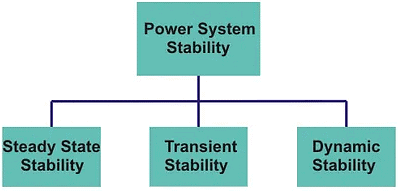Short Notes: Power System Stability | Power Systems - Electrical Engineering (EE) PDF Download

Power System Stability
Power system engineering forms a vast and major portion of electrical engineering studies. It is mainly concerned with the production of electrical power and its transmission from the sending end to receiving end as per requirements, incurring a minimum amount of losses. The power often changes due to the variation of load or due to disturbances.
For these reasons, the term power system stability is of utmost importance in this field. It is used to define the ability of the system to bring back its operation to steady state condition within a minimum possible time after having undergone any transience or disturbance. Ever since the 20th century, till the recent times, all major power generating stations over the globe has mainly relied on AC system as the most effective and economical option for generation and transmission of electrical power.
In power plants, several synchronous generators are connected to the bus having the same frequency and phase sequence as the generators. Therefore, for a stable operation, we have to synchronize the bus with the generators over the entire duration of generation and transmission. For this reason, the power system stability is also referred to as synchronous stability and is defined as the ability of the system to return to synchronism after having undergone some disturbance due to switching on and off of load or due to line transience.
To understand, stability well, another factor needs to be considered, and that is the stability limit of the system. The stability limit defines the maximum power permissible to flow through a particular part of the system for which it is subjected to line disturbances or faulty flow of power. Having understood these terminologies related to power system stability let us now look into the different types of stability.
The power system stability or synchronous stability of a power system can be of several types depending upon the nature of the disturbance, and for successful analysis, it can be classified into the following three types as shown below:
- Steady state stability
- Transient stability
- Dynamic stability

Steady State Stability of a Power System
The steady-state stability of a power system is defined as the ability of the system to bring itself back to its stable configuration following a small disturbance in the network (like normal load fluctuation or action of automatic voltage regulator). It can only be considered only during a very gradual and infinitesimally small power change.
In case the power flow through the circuit exceeds the maximum power permissible, then there are chances that a particular machine or a group of machines will cease to operate in synchronism, and result in yet more disturbances. In such a situation, the steady-state limit of the system is said to have reached, or in other words, the steady state stability limit of a system refers to the maximum amount of power that is permissible through the system without loss of its steady state stability.
Transient Stability of a Power System
Transient stability of a power system refers to the ability of the system to reach a stable condition following a large disturbance in the network condition. In all cases related to large changes in the system like sudden application or removal of the load, switching operations, line faults or loss due to excitation the transient stability of the system comes into play. It in fact deals in the ability of the system to retain synchronism following a disturbance sustaining for a reasonably long period. And the maximum power that is permissible to flow through the network without loss of stability following a sustained period of disturbance is referred to as the transient stability of the system. Going beyond that maximum permissible value for power flow, the system would temporarily be rendered as unstable.
Dynamic Stability of a Power System
Dynamic stability of a system denotes the artificial stability given to an inherently unstable system by automatically controlled means. It is concerned to small disturbances lasting for about 10 to 30 seconds.
|
21 videos|109 docs|45 tests
|
FAQs on Short Notes: Power System Stability - Power Systems - Electrical Engineering (EE)
| 1. What is power system stability? |  |
| 2. What are the different types of power system stability? |  |
| 3. How is transient stability analyzed in power systems? |  |
| 4. What are the key factors affecting power system stability? |  |
| 5. How is power system stability improved? |  |
















